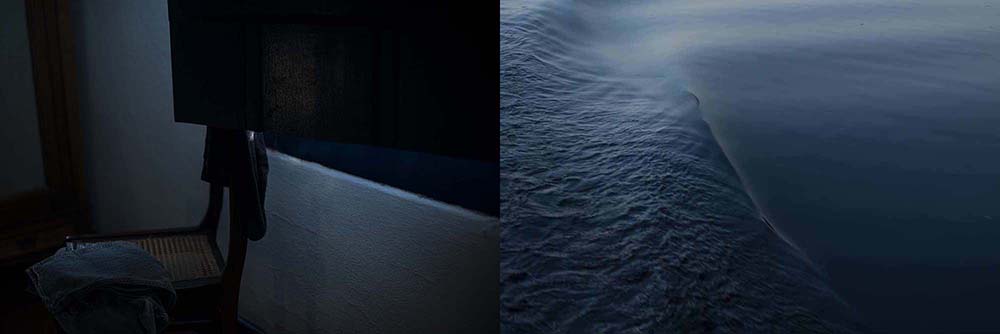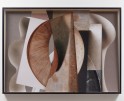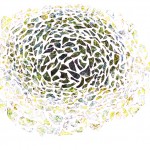Ana Leal: Transitions and Thresholds
Ana Leal was born in the Northeast of Brazil and is based in São Paulo. She creates evocative work that explores themes of fragility, temporality and impermanence. Her sensual imagery quietly considers the in-between spaces that are at once abstract and mysterious. Pushing the boundaries of the medium, Leal finds inspiration in minimalist traditions as well as impressionist painters. Many of her images are in dialogue with each other, working within the dynamics of diptychs, triptychs or in a montage.
Leal is a Lenscratch Content Editor who focuses on South American artists and will share a week of posts in late October. Today we share a selection of her many photographic projects.
An interview with the artist follows.
Coming from a patriarchal family in the Northeast of Brazil, Ana Leal began her path in the art world when she decided, almost at age 50, to dedicate herself fully to her old passion: photography. With a female gaze and perspective, Leal focuses her research on psychological themes.
Born in Recife and based in São Paulo, Leal is an artist who works primarily in photography exploring themes of fragility, temporariness, and impermanence. Inspired by impressionism and minimalism her images share an abstract aesthetic.
Leal is a Gold Award winner at the 2020 TIFA and the 15th Julia Margaret Cameron Award Winner in the abstract category. She also received a Bronze Medal at the ND Awards 2021 and Honorable Mentions at the IPA 2021, Rotterdam Photo 2021, Prix de La Photographie Paris 2019, and The 15th Pollux Awards. She completed her MFA at the Miami International University of Arts and Design (2018) and the Professional Photography Course at the Pan-American School in São Paulo (2013). Her work is part of the Florida Museum of Photographic Arts – FMoPA collection. She works also as a content editor for South America at Lenscratch.
Instagram: @analealphoto
Tell us about the landscape of your growing up?
The landscape of my childhood and youth, I would say that can be divided into two parts. The actual landscape was a very beautiful and pleasant as I was born and grew up in a coastal city named Recife, in northeastern Brazil. I used to go to the beach, ride my bike and have street games with my friends, at a time when the city was not yet so big and insecure. Ultimately, it had all the benefits of a smaller city ( not anymore ) and even more so being a coastal one. Regarding the emotional and psychological part, I would say that I had some challenges. For many reasons I had absentee parents during my childhood and adolescence, which possibly affected my self-confidence and led me to be an introspective and shy child. Curiously, I don’t have many memories from my childhood, which is another topic we can discuss a bit more later, since it is the subject of a project that is currently being developed.
In considering your art practice, is there anything in your childhood that informs the work you make today?I
My work is inevitably permeated by a sense of emptiness and silence, which are certainly linked to my childhood. My super frequent coexistence with myself brought me many reflections since I was little, and I also had a great passion for mathematics, which from an early age connected me to abstract thinking. And abstraction is clearly a huge influence on my work.
Going back to childhood memories, I’m participating in a year-long residency here in São Paulo, organized by an institution – Acho Arquivo – that collects, organizes and archive discarded photographs. In this residency, you have access to these images and develop a body of work giving a new purpose and another life to these photos that would otherwise remain in the trash and disappear. Well, my mother have always been the opposite of a hoarder and with her extreme organization discarded photographs and albums as well. I have practically no photos of my childhood and I have very few memories of it. Certainly our memories are reinforced when relived by images. In my project for the residency , which will be completed in October, I am developing a series composed of sheets from an empty album found at my grandfather’s house, where I apply torn pieces of images of children from this archive. A vain attempt to build my childhood album.
So much of your work straddles the internal and exterior world, with explorations of liminal spaces. What draws you to these slices of time and space that are poetic, psychological and ethereal?
I’ve really always been very attracted to these in between times and spaces. Whenever I see a scene and want to photograph it, what really interests me are the details, the simplicity, the margins. It’s always the supporting characters and never the protagonists that attract me.I understand that there is no specific reason for this, it’s simply the way I function, and perhaps a quest to answer existential questions. Or, possibly this occurs because when I photograph my main objective is to register the sensations that I was feeling at that moment. It would be like I aimed the camera inside myself and not at the photographed referent.
I believe there is this fine line between the banal and the sublime, which explains the fact that I build my images from elements of nature and the daily life around me. It is also a great joy to build poems with images.
How does living in Brazil inform your work?
Brazilians, in general, have a free spirit, and I bring this into my work because I don’t impose rules on myself. I value technique but I understand that this is not the main reason that makes a work powerful and meaningful. The most important aspect for me is the message and emotion that the work conveys. Also the fact that we live in a country with great social tension, dealing constantly with economic and political insecurities in our routines, forces us to be extremely creative, to overcome the obstacles that arise along the way.
What is the photo community like in Brazil ? My observation is that many photographic artists work with conceptual approaches and have unusual and exciting installations…
The photographic scene in Brazil is quite prolific and diverse. Your observation is totally pertinent. I have followed countless artists working with photography in conjunction with other media and also with the incorporation of texts. The multicultural melting pot of our country allied to the creative stimuli that derives from financial constraints, lead us to develop alternative solutions for exhibiting a body of work, and might be responsible for so many instigating pieces.
What’s next? Any exhibitions on the horizon?
I have been working intensely in these last few years on parallel projects, and as a result, some things will be happening in the next few months. Before discussing them, however, I would like to highlight two exhibitions I participated in this year. The group exhibition “A Deusa Linguagem”, which took place in February at Galeria Vermelho in São Paulo, and that brought together works by 14 artists coordinated by curator Eder Chiodetto. The group was invited to watch the film Adieu au Langage (2014), by the French filmmaker Jean-Luc Godard, and create artistic projects related to issues discussed in the movie, such as the collapse of communication and the exhaustion of images in the contemporary world. For the show I created the series Acasos and the diptych Sem Palavras. And my participation in FestFoto Poa, the Brazilian branch of Houston FotoFest, which took place in August of this year at the incredible Fundação Iberê Camargo in Porto Alegre. At the festival, I was able to present a selection from my long-term project Menos Pausa, which addresses menopause.
For this year, in September, I will be at Eixo Galeria in Niteroi, Rio de Janeiro, also showcasing works from the Menos Pausa project. This project, by the way, is one that I have dedicated the majority of my time to over the past 5 years, and where in addition to working on a photographic essay, I have been developing and mixing other media such as acrylic on photographs, watercolors, prints, films and installations. On October 7th, in Campinas, São Paulo, the group exhibition featuring the works resulting from the Acho Arquivo residency, mentioned earlier in the interview, will open. This is where I will be presenting my work entitled O vazio ocupa um lugar imenso.
Since 2021, I have also been working with Fotô Editorial on the production of my first book, which is set to be published in the first semester of 2024. The book titled Interludios features images that conduct an ethereal, delicate, and melancholic experience, weaving an implicit connection between life’s most ordinary and profound aspects. Interludios monumentalizes the fleeting moment, creating a powerful and delicate visible substance of that which inevitably escapes us. An ode to minimal occurrences.
Posts on Lenscratch may not be reproduced without the permission of the Lenscratch staff and the photographer.
Recommended
-
Photography Educator: Erin Ryan StellingJanuary 9th, 2026
-
The Female Gaze: Alysia Macaulay – Forms Uniquely Her OwnDecember 17th, 2025
-
Bill Armstrong: All A Blur: Photographs from the Infinity SeriesNovember 17th, 2025
-
Robert Rauschenberg at Gemini G.E.LOctober 18th, 2025
-
Erin Shirreff: Permanent DraftsAugust 24th, 2025












































































